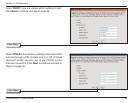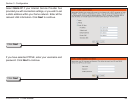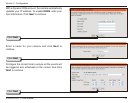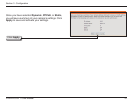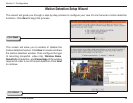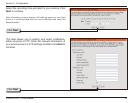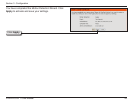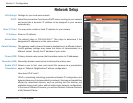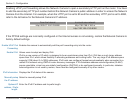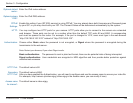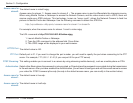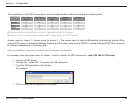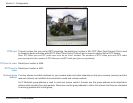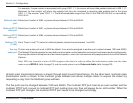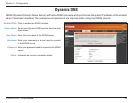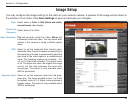
42D-Link DCS-6111 User Manual
Section 3 - Conguration
Enabling UPnP port forwarding allows the Network Camera to open a secondary HTTP port on the router. You have
to add the secondary HTTP port number behind the Network Camera’s public address in order to access the Network
Camera from the Internet. For example, when the HTTP port is set to 80 and the secondary HTTP port is set to 8080,
refer to the list below for the Network Camera’s IP address.
From the Internet In a local area network
http://203.67.124.123:8080 http://192.168.4.160 or
http://192.168.4.160:8080
If the PPPoE settings are incorrectly congured or the Internet access is not working, restore the Network Camera to
factory default settings.
Enables the camera to automatically add the port forwarding entry into the router.
Allows users to adopt and deploy IPv6.
IPv6 is a new version of IP which is designed to be an evolutionary step from IPv4. IPv6 has a much larger address
space than IPv4, which allows exibility in allocating addresses and routing trafc. The very large IPv6 address space
supports 2128 (about 3.4×1038) addresses. IPv6 hosts can congure themselves automatically when connected to a
routed IPv6 network using ICMPv6 router discovery messages. If IPv6 stateless address autoconguration (SLAAC)
proves unsuitable, a host can use stateful conguration (DHCPv6) or be congured manually. In particular, stateless
autoconguration is not used by routers, these must be congured manually or by other means.
Displays the IPv6 status of the camera.
Select to manually setup IPv6.
Enter the IPv6 IP address and its prex length.
Enable UPnP Port
Forwarding:
Enable IPv6:
IPv6 Information:
Manually setup
the IP address:
Optional IP
address / Prex
length :



